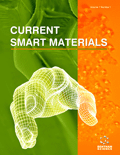Abstract
Background: In recent years, the textile fibres and fabrics enriched with multifunctional properties have gained much attention and accepted abundantly. In general, the flame-retardation ability to the textile substrates is endowed with one of the most attentive factors that needed applicability in civilian as well military area. Specific chemical bonding in several textile materials (i.e. cotton, linen, hemp; silk & wool; nylon; polypropylene; polyester) acquired specificity towards implanting flame-retardancy. The present review encompasses various finishing agents being used to develop the flame-resistant property and their aspects to sensitization and durability against several washing cycles with future research-oriented opportunities.
Results: With existing flame retarding materials, various new substituted technologies, finishing agents and active materials are being developed to meet the challenge and needs of ever-changing safety regulations. It is an interdisciplinary development that involves quite a lot of scientific and engineering tools. In the present review, various finishing agents being used to develop the durable flame-resistant property are discussed with possible future directions.
Conclusion: All the textile materials, i.e. cellulosic (cotton, linen), proteinaceous (silk, wool), and synthetic (nylon, polyester, polypropylene), including fibres/fabrics/blends, have been extensively used, especially in military and civilian area enriched with high comfort nature and several mechanical properties. Except for wool that is significantly fire-resist, other textile fibre abundantly possesses low fire retardancy and, requires further additional chemical processing towards implanting flame retardancy. Nevertheless, most of the flame retardants have been observed to have bad impacts/effects on the environment and associated with skin related to human health. Novel technologies and innovative products are being under considerations to bottom down the present challenges and issues. This would help to make cleaner substitutes for sincerely harmful conventional flame retardant finishing agents and to explore new opportunities in the textile industry and R& D sector.
Keywords: Bromine compounds, char, chemical treatment, flame retardant, polyphosphates, textile finishing.
Graphical Abstract
 41
41 6
6




